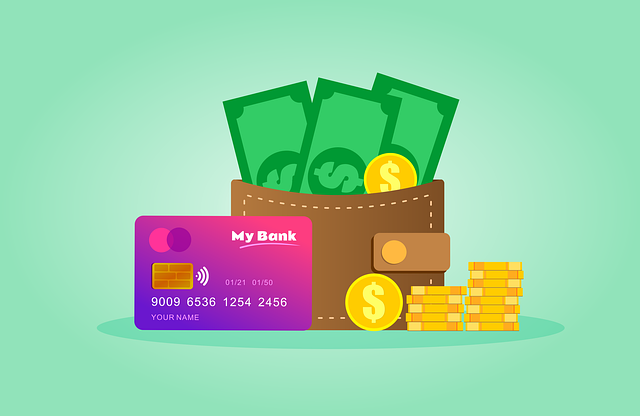Dealing wDealing with a $40,000 credit card debt can feel like being stuck in quicksand, but the first step to freedom is a good look at where you stand. Assess your income, your monthly expenses, and how much you’re putting towards your debt each month. It helps to note the interest rates on each card too, so you know where the most expensive debt is.
Start by listing all your credit cards, their interest rates, and outstanding balances. This not only gives you a clear picture of what you’re up against, but also helps in formulating a strategy. Facing the numbers head-on is crucial, even if it feels overwhelming initially. Identifying how much is going towards interest versus the actual principal can highlight ways to reduce your debt faster.
Debt doesn’t just weigh on your finances; it can mess with your head. Stress about money isn’t just frustrating, it can be downright damaging if left unchecked. Consider talking with someone you trust or even a counselor about how debt stress is impacting you. Sometimes, just getting your worries out there can make a big difference in how you feel and how you tackle your financial challenges.
Mistakes happen, especially in financial planning. Maybe you’ve been making minimum payments thinking it’s enough, or you’ve been using high-interest cards without realizing. A lot of folks fall into these traps, but catching these errors now can save you tons in the long run. Take a deep breath and remember, recognizing where things went wrong is a strong step forward.
“Disclosure: Some of the links in this post are affiliate links. This means if you click on the link and purchase the item, I may receive an affiliate commission at no extra cost to you. I only recommend products and services I personally use and believe will add value to my readers.”
Contents
Strategizing Your Debt Repayment Plan

Tackling a hefty credit card balance is much easier with a game plan. Two popular methods to consider are the snowball and avalanche techniques. The snowball method means you pay off the smallest debts first, which can be incredibly motivating as you quickly eliminate some creditors from your list. Meanwhile, the avalanche approach targets the debt with the highest interest rate, saving you more money over time. Each has its own perks, and your choice depends largely on whether you’re motivated by quick wins or long-term savings.
Calling up your creditors might seem daunting, but it can be surprisingly effective. Many times, lenders are open to reducing your interest rate, especially if you’ve been a reliable customer. This step can significantly cut down your payoff time and the overall cost of your debt. It’s worth the effort to negotiate, especially with a solid payment history.
Debt consolidation is another option worth exploring. It involves merging multiple debts into a single payment, often with a lower interest rate. This can simplify your payments and make it easier to monitor your progress. However, ensure you understand the terms completely and that it’s truly beneficial to your situation.
Establish financial goals that are both realistic and motivational. Think of your future without debt and what financial freedom means for you personally. Whether it’s saving for a house, starting a family, or simply getting a fresh start, having clear goals keeps you on track. These goals should be specific, achievable, and flexible enough to adjust as your financial situation improves.
Implementing Lifestyle Changes for Financial Freedom

Finding a way to clear debt often calls for a closer look at your spending habits. Crafting a personalized budget is crucial here. Start by isolating areas where you can cut back without lowering your quality of life. Dining out less, reducing entertainment expenses, or swapping brand names for store brands are small changes that add up over time.
Earning more doesn’t always mean getting a promotion. Consider side hustles or freelancing in a field you’re passionate about. Turning hobbies into income streams can not only boost your finances, but also add a bit of fun to your routine. The gig economy is full of opportunities if you’re willing to dive in.
An emergency fund is your safety net against unforeseen expenses that could otherwise drag you back into debt. Aim to set aside a small amount consistently till you have at least a month’s worth of expenses covered. It may feel slow at first, but this fund is essential in keeping unexpected costs from becoming new debts.
Being conscious of every dollar you spend can nump your savings without feeling like deprivation. Instead of a ‘spending freeze’, which can feel punitive, shift focus on ‘mindful spending’. Evaluate your purchases’ necessity. Over time, you’ll notice this awareness makes sticking to your financial goals easier.
Behavioral Hacks to Stay Motivated While Paying Off Debt
Tackling $40,000+ in credit card debt isn’t just about numbers—it’s also a mental game. Motivation can fade, stress can rise, and progress can feel slow. Here are some proven psychological strategies to stay on track:
1. Use “Micro-Wins” to Build Momentum
Break your total goal into smaller wins.
- Instead of thinking “I need to pay off $40,000,” start with:
→ “Let me pay off this $900 card first.”
→ “Can I reduce one card’s interest this month?” - Every micro-victory keeps your brain engaged with positive reinforcement.
Why it works: According to behavioral psychology, frequent wins increase dopamine, helping form habits and reduce fatigue.
2. Name Your Goal & Visualize It
Give your goal a personal identity:
- Call it “Debt-Free by 30” or “Freedom Fund”
- Put it on your phone lock screen or fridge
- Create a “debt-free countdown” jar or chart
Why it works: Personalizing abstract goals helps the brain stay emotionally invested and visualizing success boosts follow-through rates.
3. Reward Yourself for Milestones
Schedule small, guilt-free rewards:
- Pay off your first $5,000? Treat yourself to a movie night.
- Reach halfway ($20K)? Enjoy a weekend getaway within budget.
Why it works: Rewards release serotonin and reduce burnout. Just be sure they’re affordable and don’t reverse progress.
4. Automate Good Decisions
- Use automatic payments to avoid late fees.
- Set calendar reminders to review progress every 30 days.
- Automate debt snowball or avalanche payments through your bank.
Why it works: Reduces the mental load and decision fatigue—two major blockers to long-term success.
5. Track Progress Visually
Create a visual tracker (chart, coloring grid, debt thermometer).
- Update it monthly
- Celebrate with friends or a support group when you hit major targets
Why it works: Visual feedback loops keep progress “real” and reinforce effort, even when motivation dips.
 Bonus Hack: Use Affirmations
Bonus Hack: Use Affirmations
Write 1–2 statements like:
“Every dollar I pay is buying my freedom.”
“I am capable of becoming debt-free.”
Say it daily—it may sound cheesy, but it builds resilience.
Leveraging Professional Resources and Tools

Sometimes, you can’t go it alone, and that’s perfectly okay. A certified financial advisor or credit counselor can bring a fresh perspective to your situation and offer personalized advice. These folks are skilled in creating actionable plans that align with your personal financial goals and constraints.
Technology can aid in managing your progress. Apps and online tools specifically designed for debt management can provide a handy overview of what you owe and how you’re tracking against your repayment goals. These tools often come with reminders and trackers that ensure you’re on top of your payments and future planning.
There may come a time when legal advice becomes necessary. If your debt has gotten too overwhelming, talking to a lawyer about bankruptcy might be an option. It’s a serious step with long-term consequences, so ensure you’re informed about all the ramifications before proceeding.
Educating yourself is one of the best ways to stay ahead once your debt is under control. Read up on personal finance, attend workshops, or take online courses. This knowledge builds the foundation for smart financial decisions and keeps you away from falling into the same traps that got you into debt initially.

